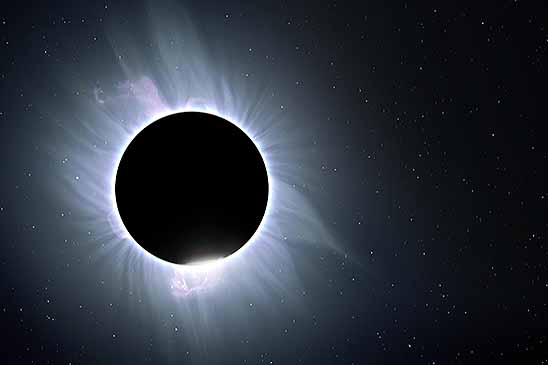Insights > Total Eclipse of the Heartland: The Electrical Grid Is Ready
Total Eclipse of the Heartland: The Electrical Grid Is Ready
07/24/2017

After lunch on Aug. 21, you may notice it getting dark outside and wonder, “Did I set my watch wrong? Is a storm coming? Am I on the set of Independence Day III, and a giant alien spacecraft is blocking the sunlight?”
Then you’ll remember: It’s the arrival of a much-anticipated solar eclipse that will be visible in nearly all of North America. And although the path of the total eclipse will be outside most states where Entergy companies operate, it will definitely get darker where we are, rain or shine.
How the eclipse affects the U.S. electrical grid
Although there’s a genuine wow factor to the solar eclipse, its effect on the U.S. electrical grid will not be large, according to a study by the North American Electric Reliability Corporation. NERC found that the Aug. 21 eclipse is “unlikely to cause any reliability issues to the North American bulk power system.” You can read the NERC white paper here.
The effect of the eclipse will be more pronounced in California, where solar generation makes up a sizeable piece of the energy pie. North Carolina, which is in the projected path of the total eclipse, also has a significant concentration of solar power installations.
“In California, a significant amount of solar energy is produced on a typical August day. But Aug. 21 won’t be typical,” said Charles Long, transmission planning director at Entergy. “Traditional generation, such as natural gas-fired plants, will pick up the slack for solar plants that won’t be able to produce energy during the eclipse.”
That kind of power variation can happen anytime clouds pass over solar farms, he said.
“The big difference with this eclipse is that grid operators know it’s coming in plenty of time to plan for it,” Long said. “For our purposes, we don’t expect any significant impacts in our service area. Making up for any lost solar output in our region should be easily handled in normal operations.”
NERC recommended that utilities in Utah, California, Nevada and North Carolina, in particular, be prepared to deal with electrical load variations during the event.
Tips for safely watching a solar eclipse
If you plan to “watch” the eclipse, be sure to follow these tips for safe viewing.
If you’re too busy to observe this solar eclipse, there’s another one coming in April 2024.
